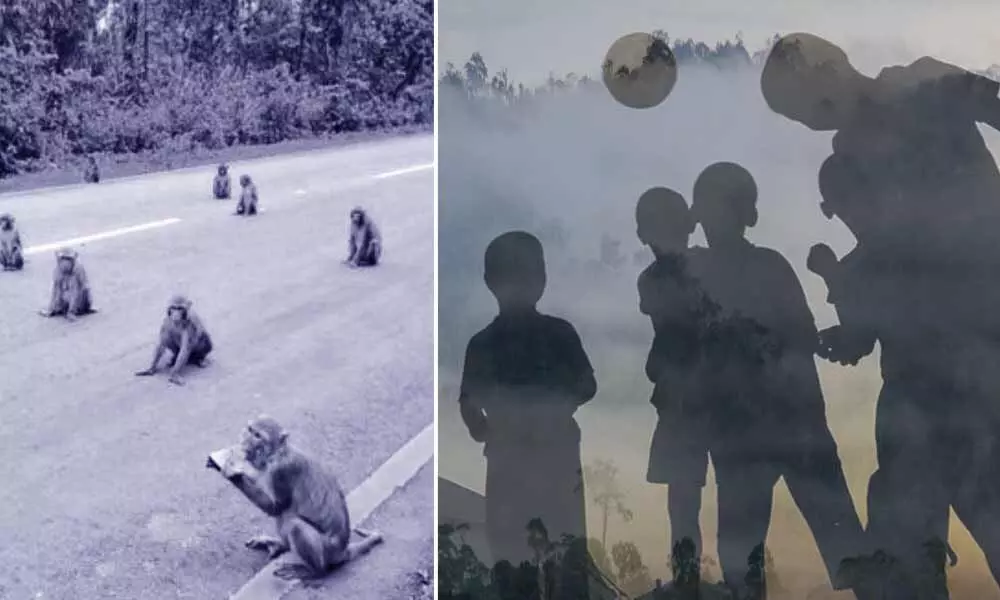Animals Social Distancing; From lobsters to honey bees everyone follows it

Animals Social Distancing; From lobsters to honey bees everyone follows it
The best examples of what we might call “quarantining” come from social insects like ants and bees.
This year "Social distancing" has become one of the buzz phrases after the COVID-19 pandemic. But it's not only humans who are following social distancing between themselves but also Wildlife—from finches to mandrills—follow similar plans, as per a paper published in the Proceedings of the Royal Society B this week.
Science spoke to two of the study's authors—Andrea Townsend, a behavioural ecologist at Hamilton College, and Dana Hawley, a biologist at the Virginia Polytechnic Institute and State University—about how self-isolating works throughout the animal kingdom.
Please find the interview below
Q: How do animals know when they need to socially distance?
Andrea Townsend: COVID-19 has so many symptoms that it's hard to know when someone is sick. But some animals like house finches use very general behavioral cues, such as lethargy, to assess potential infections and avoid certain individuals.
Dana Hawley: In other cases, animals have evolved fairly complex cues to induce social distancing. The Caribbean spiny lobster [a social lobster that normally lives in groups] has evolved to detect a chemical cue in the urine of sick lobsters and avoid areas that these sick lobsters occupy.
Another example is in mandrills. Researchers took the feces of animals that did or did not have parasites and basically put a tiny amount on the side of a tree. They found that the primates were much more strongly drawn to the feces of unparasitized animals than those that were parasitized.
Q: What does it look like when animals social distance?
D.H.: For the spiny lobsters, their social behaviour is being packed together in dens, which provide them with a lot of protection. For them, social distancing means abandoning that den, which is quite a dangerous prospect for them. In other cases, it's a lot more subtle, like just interacting less with a particular individual in a group.
Q: There also seem to be some examples of animals self-quarantining.
D.H.: The best examples of what we might call "quarantining" come from social insects like ants and bees. In some cases, infected insects will purposefully leave the colony to go off and die.
A.T.: In these types of insect colonies, individuals are highly related to one another—more so than in human family groups. So, it can be to the benefit of an individual to sacrifice itself to protect its larger family.
Q: How do we know they're social distancing or quarantining because of disease, and not for some other reason?
D.H.: There are several ways of getting at the cause of these behaviours. One neat way that can be done in wild animals is to medicate individuals to remove the parasites and then see whether the avoidance behaviour changes. Researchers did that in the mandrills. Even though parasitized individuals were avoided previously, they found that once they were treated for the infection, they began being groomed again.
Researchers have also done great studies in ants where they introduced a fungal pathogen into a colony, and then compared the behavioural response to colonies where a water solution was introduced as a control. If you see changes in behaviour [limiting movement within the nest or spending more time outside that nest] that are consistent with the avoidance of the pathogen, that's pretty strong evidence that those animals are responding to the fungus itself.
Q: But animals can't always social distance, right?
A.T.: One of my favourite examples is the Tasmanian devil. It has this really nasty transmissible cancer that is spread through biting. You would think that they should just stop biting one another, but biting is really important for their mating: They bite rivals over mates, and then they even bite while they're mating.
Q: Any lessons for us?
D.H.: For me, a big takeaway is that social distancing works. Anytime we see a behaviour that has evolved again and again in unrelated types of animals, that's a signal that even though social distancing is a very costly behaviour, the benefits clearly outweigh the costs.
Source: science


















